Table of contents
Mustard or table mustard is a paste made from mustard seeds from the white, brown and black mustard plants. Depending on the composition, it tastes mildly sweet to very spicy.
Use in the kitchen
Mustard is used in the kitchen as a spice. In addition to table mustard, the whole seeds and mustard powder are also used to season dishes. Mustard is generally vegan.
Salad dressings for delicious raw vegetable salads can be seasoned well with table mustard, such as a balsamic Dijon dressing or an oil-free avocado sauce . Mustard has an emulsifying effect and is therefore a component of mayonnaise and vinaigrette. It also tastes delicious in marinades.
The taste of the mustard paste depends on the mustard seeds used and the method of preparation with water, vinegar or juice from ripe or unripe grapes or other ingredients. You can find out how the typical mustard taste comes about under "Further information".
By mixing the ratio of white mustard seeds , brown mustard seeds and black mustard seeds, you can determine the spiciness of a mustard paste as desired. The mustard seeds differ not only in their color, but also in their spiciness. This is due to the different glycosides they contain. White mustard contains sinalbin and is milder. Brown and black mustard contain sinigrin and are significantly spicier, with brown mustard seeds being less spicy than black mustard seeds. Mustard paste can also be made from mustard powder (mustard flour).
Making your own vegan mustard
When making mustard, the taste and spiciness of the mustard paste is determined by the choice of ingredients. The ratio of the different mustard seeds, the degree of grinding of the seeds and the must or vinegar used give very different tastes and consistencies. Ingredients such as horseradish ,pepper , chili , dried herbs such as thyme , rosemary or tarragon , lemon juice , garlic, turmeric , paprika powder , honey , agave syrup , dates or sugar create taste nuances between sweet and mild, spicy and very hot.
For a basic recipe, first put water, vinegar (e.g. apple cider vinegar ) and mustard seeds or mustard powder (if you want to do it faster) in a small bowl. For 200 ml of mustard paste, you need around 50 g of mustard seeds, 60 ml of water and 60 ml of vinegar. Cover and leave this mixture to swell in the fridge. If you use powder, 60-90 minutes is enough; if you use whole mustard seeds, it is best to leave the mixture overnight. As a variation, you can first crush the mustard seeds in a mortar or grind them in a mill and then mix them with water and the other ingredients. Soaking is then no longer necessary, or only necessary for a short time. If the crushed seeds come into contact with water, the spiciness is released.
Then add a little lemon juice and salt and puree until the paste has a creamy consistency. To prepare your own favorite mustard, add herbs, other spices, sweeteners or whole mustard seeds as desired. The mustard is then left to steep for a few hours so that it can develop its full flavor. Then fill it into clean containers. The aromas of mustard oil are very sensitive to heat, which is why low temperatures are important. At higher temperatures, a bitter taste can develop.
Because mustard oil is sensitive to heat, you might assume that practically all mustard is raw quality. When making your own mustard, make sure you use unpasteurized apple cider vinegar and no heat to get raw mustard. Mustard made with balsamic vinegar is not a raw product. Industrially produced mustard from the supermarket is hardly ever raw. Small manufacturers rarely offer mustard in raw quality.
Vegan recipe for a mild mustard
Ingredients (for one jar): 100 g yellow mustard powder (organic), 100 ml white wine vinegar , 50 ml white wine , 1 tbsp liquid honey , ½ tsp salt , 1 tbsp rapeseed oil .
Preparation: Mix all the ingredients in a blender to form a mushy paste, then leave it uncovered for half a day, stirring occasionally. This allows natural fermentation to occur. Store the mixture in screw-top jars for three weeks or longer.
Dried organic herbs such as thyme , rosemary , dill , tarragon or wild garlic give mustard a special touch.
Vegan recipes with mustard can be found under the note: " Recipes that have the most of this ingredient ".
| Not only vegans or vegetarians should read this: Vegans often eat unhealthily. Avoidable nutritional errors . |
Purchasing - Storage
Large retailers such as Coop , Migros , Denner , Volg , Spar , Aldi , Lidl , Rewe , Edeka , Hofer and Billa sell many different types of mustard, some of which are organic. Organic mustard is also available in organic supermarkets such as Denn's Biomarkt and Alnatura . You can find mild mustard, medium-hot mustard, sweet mustard or coarse-grained mustard. Well-known mustard blends are: Dijon mustard, tarragon mustard, delicatessen mustard, Düsseldorf mustard, Bavarian white sausage mustard, English mustard, Kremser mustard and many others.
Some mustard varieties can contain a lot of sugar or other sweeteners. A quick look at the ingredients list will tell you what is in the mustard you buy. The glucose naturally produced during the production of the mustard paste does not amount to more than 1%.
The availability of mustard varies depending on the size of the store, catchment area, etc. Our recorded food prices for the DA-CH countries can be found above under the ingredient image - and by clicking you can see their development at different suppliers.
Storage tips
Homemade mustard will keep in a closed container in the fridge for up to 4 weeks. Once opened but tightly sealed, purchased mustard will keep in the fridge for around 3 to 6 months. 17
Ingredients - Nutritional values - Calories
The nutritional values vary greatly depending on the composition of the mustard paste. The high salt content of 2804 mg/100g in mustard is explained by the salt added in the recipe for the mustard paste stored in the USDA database. Mustard seeds themselves contain a very low proportion of table salt at 13 to 23 mg/100g. 2 With 60 kcal/100g, mustard is relatively low in calories. It contains around 3.3% fat, 3.7% protein and 5.8% carbohydrates. 2 Dijon mustard (made without sugar) has hardly any sugar at 1 g/100g, whereas Kremser mustard (made with sugar) can contain up to 20 g/100g sugar. 1
Selenium is relatively high in mustard paste at 34 µg/100g. Tahini has a similar content. Brazil nuts exceed this value several times over at 1917 µg/100g. 2
Manganese is also present in significant amounts at 0.42 mg/100g for a processed product. Rice noodles and soy sauce contain similar amounts of manganese. 2
The mustard oil glycosides (glucosinolates) are among the particularly characteristic ingredients of mustard seeds. While the flour from the black and brown seeds mainly contains sinigrin, the white seeds mainly contain sinalbin. 14,15 White mustard forms bisphenol F from sinalbin (more in the "Dangers" chapter). During grinding, the glucosinolates come into contact with the plant's own enzyme myrosinase, which is stored in separate cells. This is followed by a chemical rearrangement of the glucosinolates to form the mustard oils, which taste pungent and irritate mucous membranes (similar to horseradish ). Sinalbin produces pungent-tasting, non-volatile oil, and sinigrin produces pungent-tasting, volatile allyl mustard oil. 16
Further components of the mustard composition can be found in the specific mustard seed descriptions.
You can find all the ingredients of mustard, the coverage of the daily requirement and comparison values with other ingredients in our nutrient tables. In the article Nutrients explained you will get a detailed insight into the topic.
Health effects
Table mustard has an appetite-stimulating and digestive effect due to the high proportion of mustard oil and the glycosides sinalbin and sinigrin. The active ingredient allyl mustard oil, released from the glycoside sinigrin, has strong irritating properties and thus promotes circulation. Sinigrin is found in brown and black mustard seeds. 4
Can you use table mustard for mustard compresses? For mustard compresses, you use mustard powder and not table mustard, as this is not suitable for this purpose. Mustard compresses are used externally for catarrh of the respiratory tract, chronic degenerative joint diseases, soft tissue rheumatism and neuralgia (nerve pain). 5
Mustard seeds have numerous positive health effects due to the ingredients they contain. You can find out more about their use as medicinal plants under the following links: white mustard seeds , brown mustard seeds and black mustard seeds .
Dangers - Intolerances - Side effects
Bisphenol F (BPF) is a chemical compound that is also found in plastics. A laboratory study by the Federal Office for Food Safety (BLV) was able to prove that white mustard forms BPF during the production of mustard paste. Little is known about the toxicity of BPF, but it appears to be similar to that of bisphenol A (BPA). The substance is considered to be weakly hormone-active. 3
The average portion of mustard in Switzerland is around 8 g. The highest concentration of BPF measured in mustard was 8.35 mg/kg. If a person consumed ten times the average portion, i.e. 80 g per day, their intake of BPF would be around 2000 times lower than the toxic dose (20 mg/kg body weight) in animals. Based on current knowledge, the FSVO classifies the health risks of BPF in mustard as low. 3 The black and brown mustard seeds used to make hot mustard varieties do not contain sinalbin and do not produce BPF.
Mustard is an allergen and can lead to an allergic reaction in those affected after ingesting mustard and foods containing mustard. Mustard is subject to the labeling requirement for ingredients in food. If you are allergic to mustard, you may also experience allergic reactions to related cruciferous plants (Chinese cabbage, rapeseed, cauliflower, beets and others). 6
Ecological footprint - animal welfare
The ecological footprint of mustard paste depends on several aspects, including the ecological balance of the mustard seeds and other ingredients used, as well as the processing method, transport and packaging. The Big Climate Database gives the CO 2 footprint of mustard as 1.76 kg CO 2 eq/kg. The largest share of emissions produced comes from processing and packaging. 18 A Canadian study on the environmental impact of mustard production showed that the use of nitrogen-based fertilizers was the primary source, accounting for up to 42% of the emissions produced. 20
Despite extensive research, we were unable to find any precise figures on the amount of water needed to produce mustard. To produce 1 kg of mustard seeds, 2809 litres of water are needed. 19
Mustard plants are heat-loving plants and can cope well with dry and hot years. They can be used as green manure and have a variety of soil-improving properties. With their branched and deep root system, they counteract soil compaction and play a role in soil health and soil stability. 13
Animal protection - species protection
Mustard plants are a very attractive source of nectar and pollen for insects. 11 Pollination occurs through bees, other insects or self-pollination. If sown later, the plant flowers until October and thus provides insect food in summer and early autumn. 12
Worldwide occurrence - cultivation
Mustard seeds have been used as a spice and medicinal product for thousands of years. During the Roman Empire, mustard probably reached Central Europe, from where it spread to the rest of Europe. 9 Mustard and horseradish were the only hot spices in Europe for centuries. Later,black pepper (13th century) and chili (16th century) were added to the range.
Black mustard (Brassica nigra) is more difficult to harvest mechanically, which is why today only white mustard (Sinapis alba) and brown mustard (Brassica juncea) are used.
Around 532,769 tonnes of mustard seeds were produced worldwide in 2021. The main growing areas were Nepal (220,250 tonnes), Russia (144,593 tonnes) and Canada (60,532 tonnes). 10
Industrial production
How is mustard made? Table mustard is made industrially from cleaned, peeled or unpeeled, partially deoiled mustard seeds. These are mixed with other ingredients such as water, vinegar, salt and spices (coriander, turmeric, tarragon, capers, cinnamon) as well as salt and/or sugar. The mixture is left to steep for a while. It is then ground at around 60 °C to form a fine paste. Crushing the mustard seeds and mixing them with water causes the enzymatic release of mustard oils (myrosinase). Some mustard specialties are left to mature in mustard vats. The spiciness and taste of the mustard pastes vary depending on the proportion of mustard varieties and other ingredients used. 9
There are also processes in which the mustard mass is heated to 80-90 °C for 2-3 hours. This is just to make it clear that mustard from industrial production is usually no longer raw. 21
Further information
Mustard paste is made from the mustard seeds of different mustard plants. There are white-yellow mustard seeds ( Sinapis alba ), brown mustard seeds ( Brassica juncea ) and black mustard seeds ( Brassica nigra ).
Whole mustard seeds have no taste. The typical mustard taste and its sharpness are only perceived when mechanical processes bring the corresponding enzymes (myrosinases) together with their substrates (mustard oil glycosides). These are spatially separated from one another in the intact plant. If the cell walls are destroyed by chewing, e.g. by humans or natural predators of the plant, the enzymes and substrates come into contact with one another. This causes a chemical reaction that is accelerated by the presence of water (e.g. in the saliva of predators). The myrosinases break down the mustard oil glycosides into glucose (dextrose) and mustard oils. The latter are substances that have the typical sharp and acrid taste, which in nature deters predators and thus protects the plant from further damage. 7
This effect is used to obtain the desired taste in mustard products. To preserve the taste for longer and to intensify the smell, other liquids are usually used instead of water. If you mix mustard with vinegar, milk (no longer vegan), wine or beer and leave it to stand for a few minutes, you get different taste experiences. While water produces a very sharp and biting taste, vinegar leads to a milder taste. Milk produces a mild, spicy taste. Beer, on the other hand, leads to a very sharp taste. 8
What is the difference between mustard and mustard? The name mustard has its origins in the manufacturing process. Originally, table mustard was mixed with grape must instead of vinegar. The name comes from the Latin mustum ardens (burning must). Dijon mustard is also not made with vinegar, but with verjuice (juice from unripe grapes). Brown or black mustard seeds are used that have not been deoiled. The classic light Dijon mustard consists of peeled seeds and is spicy. In French cuisine, it is used primarily for sauces and dressings.
ABB mustard or Düsseldorfer Mostert is a mustard specialty from Düsseldorf that was originally made with brandy vinegar instead of grape must. The mustard, which has been produced in Düsseldorf since 1726, is the oldest German mustard brand still in existence. Bavarian Weisswurst mustard has a particularly mild and slightly sweet taste and sometimes contains caramel syrup. The spicy English mustard is made from white and black mustard seeds.
Alternative names
Mustard is also called Mostert or Mostrich. The English name for mustard is mustard.

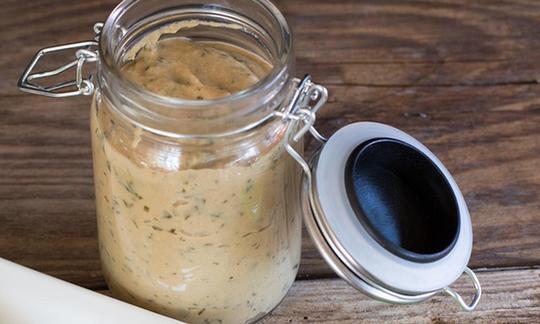

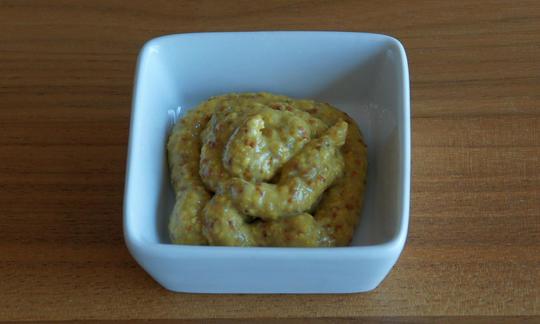

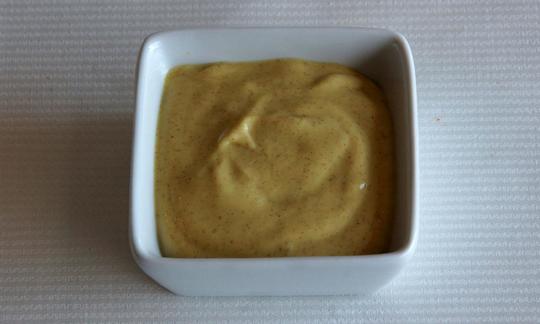

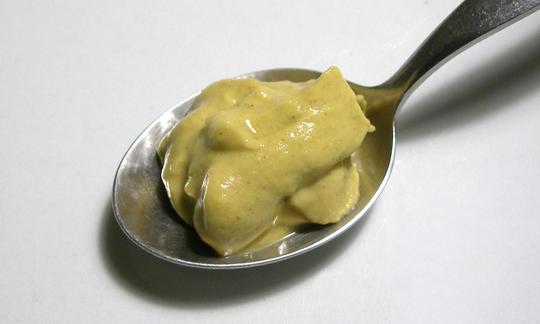

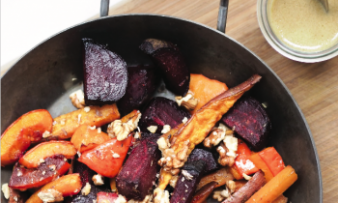
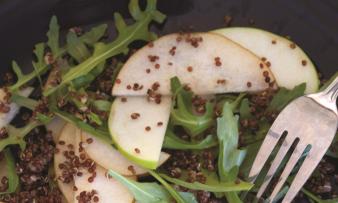
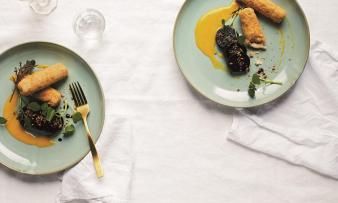

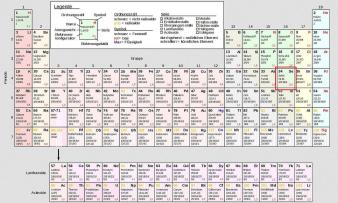



Comments